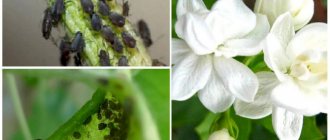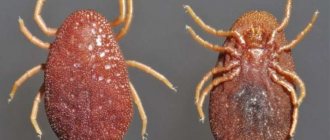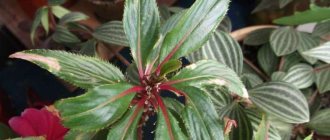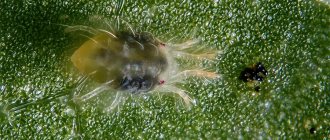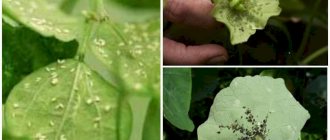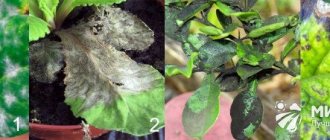Indoor lemon requires constant care and attention. It needs regular watering, fertilizing, shaping, ensuring optimal temperature and lighting. Violation of the rules of care often leads to infection of the tree with infections or insects.
Diseases and pests are the main reason for the death of indoor lemons. They stop the development of the tree and cause leaves and shoots to fall off. This leads to disruption of photosynthesis and, without treatment, to the death of the plant. Read on to learn how to promptly recognize the problem and deal with it.
Diseases of lemons indoors
Indoor lemon has a fairly large list of possible diseases. Let's look at the most common ones.
Chlorosis
This disease occurs as a result of stagnation of moisture, acidification of the soil, deficiency of iron and other elements. In this case, there is a decrease in the activity of photosynthesis and the formation of chlorophyll. The first sign is yellowing of the leaves and then their falling off. Then the tops of the shoots may dry out, the roots die, and the leaves become shredded.
With chlorosis, the soft tissues of the leaves turn yellow, but the veins remain green.
It is clear that the disease is caused by a violation of care, so first of all you need to eliminate them:
- Get rid of stagnant moisture, dry the soil, and replace it if necessary. Rinse and dry the drainage. You may need to transplant it into another, smaller pot.
- Test the acidity of the soil using litmus paper. If it is high, then the soil should be deoxidized by adding fluff lime or chalk. To do this, take half a tablespoon of powder and dilute it in a glass of warm water, then water the soil in the pot. The acidity of the water flowing from the drainage holes is measured, and if it is still high, the procedure is repeated until the pH level is within 6-6.5 units.
- Replenish iron deficiency by adding preparations containing it in chelated form, such as Ferrofit, Ferrilen, Antichlorosis, Micro-Fe and the like. Or you can simply dissolve 20-40 grams of iron sulfate in one liter of water and feed the plant.
Phyllosticosis
This fungal disease is also called brown spot. A sign of the disease is the formation of brown or dark brown spots of round, oval or irregular shape on the leaves. If treatment is not started, the spots grow and cover the entire surface of the leaf blade, after which the leaves dry out and fall off. Favorable conditions for the development of fungus are dampness and air temperature of +25 °C and above. The source of infection is soil, water, purchased flowers, etc.
When affected by phyllosticosis, brown spots form on the leaves of plants
To cure a plant, you should tear off the affected leaves and treat the crown with fungicides (these are drugs to combat fungal diseases). Popular drugs are Horus, Quadris, Abica-Peak and others. It is better to use them outdoors, but if you still have to use them indoors, then take precautions - prevent the drugs from getting on food or dishes, and ventilate the room after treatment. If the infection is not severe, then it is better to use biological products such as Fitosporin-M, which is absolutely safe for humans, animals and bees. At the same time, it is also a fertilizer, as it contains humic acids.
Anthracnose
This is also a fungal disease that often affects lemons in greenhouses and conservatories. If the room has high humidity and temperature, then indoor lemon may also become infected. Anthracnose can be recognized by the formation of dark brown spots on the leaves, covering the edges. If the infection is severe, the fungus spreads to the shoots and fruits, all leaves dry out, and the above-ground part of the plant dies.
Anthracnose can be recognized by the formation of dark brown spots on the leaves, covering the edges
Prevention and treatment are the same as for other fungal diseases.
Citrus cancer
If dark brown spots with a yellow border, similar to small tumors, have formed on the leaves of the lemon, this means that the plant is infected with the citrus canker virus. It is not able to cause harm to a healthy plant, but if it is weakened by other diseases or poor quality care, then cancer will begin to develop. At the same time, it, starting on the leaves, will subsequently move to the fruits and shoots. We have not yet learned how to fight the disease, so the plant will definitely die. Without expecting this, it is destroyed as quickly as possible so as not to infect healthy lemons and other citrus fruits, if any. Prevention - careful adherence to the rules of lemon care, as well as regular treatment of the crown with a weak solution of potassium permanganate at intervals of 3 months.
If dark brown spots with a yellow border appear on the leaves of the lemon, the plant is infected with the citrus canker virus.
Video: lemon diseases
Preventing the appearance of midges
To prevent the appearance of midges, you need to use a special soil that contains components that are not suitable for eating by larvae. The following can be used as additives to the soil base for these purposes:
Special soil with additives against plant diseases
- coal;
- bark;
- coconut fiber;
- peat (fibrous);
- needles.
Before use, the soil must first be frozen so that any larvae that accidentally enter the soil will die before the lemon appears in the pot. You should not use organic fertilizers that are susceptible to rotting (for example, tea leaves). Such additives stimulate the maturation of midge larvae, which cause the greatest harm to the plant.
Since midges can severely damage roots, it is necessary to check and treat them if midge damage is suspected. To do this, you need to clean and dry the root of the plant, and then replant it in fresh soil, limiting watering.
When watering, to eliminate earthen midges, add a solution of potassium permanganate to the water for irrigation. The main condition for its successful use is accuracy and dosage. An excess of manganese in the soil can cause the plant to wilt.
Adding potassium permanganate to water for watering plants
Do not allow excess moisture in the soil. Excessive moisture causes the appearance of midges. A good preventative measure is to periodically loosen the soil in order to dry the soil from excess moisture.
Pests on lemon
Of course, in indoor conditions it is more difficult for insects to get to the plant, but there are still ways.
Shchitovka
This is a hemiptera insect with a small (0.5-5 mm) body covered with a dense shield consisting of one or two larval skins and a secretory waxy part. Because of this, scale insects on the plant are sometimes perceived as droplets of wax. Young insects move actively, settling throughout the lemon. In adulthood, scale insects lose the ability to move and stick to the plant. Feeding on its juice, they themselves secrete a sweet liquid, which accumulates on the leaves and shoots, making them sticky. It clogs pores, preventing respiration and photosynthesis. This liquid is also a breeding ground for sooty fungus. If you do not fight the pest, the result will be disastrous - the leaves will curl, dry out and fall off, the plant will weaken and die.
Scale insects on the leaves resemble droplets of wax
Insecticides are used to kill pests. The contact preparation Fitoverm can be used against young larvae, but adult insects are reliably protected from its damaging effects by the shell. Therefore, systemic drugs that penetrate the plant’s vascular system will be more effective. Pests, feeding on poisoned juice, die. The best of this group for lemon are Aktara and Aktellik. They can not only spray the crown, but also water the soil to enhance the effect. But it should be remembered that Actellik has a strong unpleasant odor, so it can only be used outdoors. In addition, you can use various folk remedies - onion and garlic infusions (they are prepared by keeping chopped vegetables in water for about half a day at the rate of 50 grams per half liter), soap-kerosene solution (per liter of water 40 grams of grated soap and 1 ml kerosene) and others. In the initial stages of insect damage, you can wash off with soapy water using a brush or sponge.
Aphid
The smallest (0.5-3 mm) insect is widely known to everyone who has a garden, vegetable garden or indoor plants. As a rule, light green aphids can be found on lemons. Its harmful effect is similar to that of the scale insect - the aphid also feeds on the sap of leaves and shoots, secretes a sticky sweet liquid, and curls the leaves. The means and methods of dealing with it are also similar.
Light green aphids are more common on lemons.
Spider mite
This pest has microscopic dimensions (0.2-0.6 mm), and is not easy to see with the naked eye. Therefore, it is usually possible to detect its presence on a lemon only after some part of the leaves is damaged. Settling on the underside of the leaf, these arthropod arachnids pierce the leaf blade and feed on the sap. On the front side of the leaf, yellow spots form around the punctures, which are used to determine the presence of a mite. Subsequently, the leaves curl into irregularly shaped lumps, which the mite entangles in a web, thus equipping a nest.
Very small yellowish dots on the leaves indicate damage by spider mites
Insecticides are powerless against ticks. They are fought with acaricides (these are special anti-tick preparations) and universal insectoacaricides, for example, the above-mentioned Fitoverm and Actellik. In indoor conditions, Demitan is used, which successfully copes with the parasite, but it is dangerous for fish, so you should protect the aquariums in the house from getting into them.
Mealybug (white aphid, hairy louse)
It is small in size (from 3 to 6 mm) and has an oblong body, covered with a powdery, cotton-like white coating. Like the previous pests discussed, it is sucking and feeds on sap from all parts of the plant. A variety of citrus mealybug can also attack lemon roots. It's very easy to get rid of it. Since the bug is afraid of moisture, when it is detected, it is enough to simply bathe the lemon in warm soapy water, thoroughly washing off the insects. Then you should treat the crown with a strong-smelling infusion, for example, tobacco or garlic, to repel new pests.
The mealybug has an oblong body covered with a mealy, cotton-like white coating.
Video: Aktara treatment for pests
Special Precautions
Since lemon is too attractive to insect infestations, when purchasing new plants, it is necessary to isolate them from the lemon tree. Insects in the soil or on a new plant can easily end up on a vulnerable lemon. They have every opportunity for this. And if this happens, you will have to immediately begin fighting new pests.
Growing lemon separately from other plants will protect it from pests.
By taking preventive measures and using available insect control products, you can protect your homemade lemon and extend its life.
Some Frequently Asked Questions About Lemon
It is not always possible to determine the cause of deviations in the development of lemon. Let's answer some common questions about diagnosing problems.
Brown spots appeared on the lemon
This indicates infection with fungal diseases - anthracnose or phyllosticosis. In the worst case scenario, it could be citrus canker.
Why does a lemon drop flowers and what to do?
The reasons for this phenomenon may be various violations of lemon agricultural technology:
- Drafts and sudden changes in temperature during flowering.
- Moisture deficiency or excess.
- Inadequate nutrition, deficiency of potassium and phosphorus.
- Too much flowering, the plant sheds excess flowers.
- Moving a blooming lemon to other rooms, turning it 90-180°.
- Pest infestation.
To eliminate the problem, you need to normalize the living conditions, normalize by removing excess flowers (leave one of the largest buds per 10-15 leaves), and get rid of pests.
How can you treat lemon when rolling leaves?
To answer this question, you need to know the causes of the phenomenon. They can be like this:
- Leaves may curl due to lack of water. You should follow the rules for maintaining optimal humidity for lemon.
- If there is a lack of fresh air, the leaves can also curl. Therefore, with the onset of warm days, indoor plants should be moved to verandas or under awnings and similar places, protected from drafts and direct rays of the sun.
- If after watering the leaves do not straighten and the situation remains unchanged, this means that the plant is deficient in boron. In this case, you need to make up for the deficiency by adding a 0.2% solution of boric acid (2 g per liter of water).
- If the leaves are not rolled into a tube, but simply bent, then this indicates a copper deficiency. For such symptoms, you need to spray the lemon with a 0.5% solution of copper sulfate.
- And the leaves can curl as a result of damage by aphids or scale insects.
Why do lemon leaves have sticky leaves?
The most common cause is the sweetish secretions of aphids or scale insects. And also, perhaps, with excessive watering, the plant itself releases a sugary liquid.
Lemon tree diseases
A homemade lemon can become a victim of any insects, but most often it is attacked by the following pests:
- Scale insects are sedentary pests that stick to plant leaves using wax produced. Over time, the entire surface of the lemon will become sticky, after which the leaves turn yellow and actively fall out;
- spider mites - the onset of plant infection can be determined by the appearance of brownish spots on the leaves. Over time, the leaves become covered with cobwebs, along which small red dots move - this is the spider mite;
- aphids - yellow-green insects are not very visible on the surface of the trunk, so it is quite difficult to notice them at an early stage of their appearance. Their numbers increase very quickly, occupying not only the trunk, but also the leaves on the lemon.
For each individual case, certain drugs should be used, since some insects are immune to chemically active components. Ideally, you need to prevent the appearance of insects and regularly monitor plant hygiene.
What are aphids?
Aphids are the most common pest. This is a very small insect that is light green in color and approximately 1-3 mm long. Pests of this species increase in number very quickly and can produce 10-20 generations per season. Knowing this fact, it is easy to understand why you need to get rid of aphids on lemon as quickly as possible.
What harm do aphids do?
Small insects suck sap from leaves and young branches, after which the leaf blade can become deformed and the ends of the branches become bent. As a result, the plant no longer looks aesthetically pleasing and, losing its vitality, simply dies.
Important! It is very easy to detect aphids because they are very clearly visible on the leaf. She enters the apartment through open windows, and can also enter from any flower arrangement. Thus, it is impossible to completely avoid the misfortune, but taking action to kill the pest and quickly ending this fight is a completely feasible task.
Traditional methods
If insecticides cause concern, and mechanical removal of insects does not help much, it is recommended to pay attention to a mixture of 50 g of laundry soap and five drops of kerosene.
The lemon is treated with this mixture, after which the tree is left for several hours. During this time, the parasites should suffocate, after which the citrus must be rinsed well with clean water.
When processing, it is important to combine a folk recipe and mechanical removal of parasites to achieve maximum effect and prevent the possibility of re-infection.
Biological method
The only enemy of the spider pest is the predatory mite Phytoseiulus persimilis. Its main and almost only food is spider mites. This predator is completely safe for humans, pets and plants. Using a mite against its kind is easy and pleasant; there is no need to waste time on tedious running around with spraying, soap, wrapping plants with film or washing clothes after treatment. In a day, the predator is able to find and eat 5 mites or 10 eggs, and it works ahead of the curve; spider mites reproduce more slowly. True, as soon as the entire population of spider mites dies, the predator also dies for lack of food.
Types of predators
There are two types of predators:
- Phytoseiulus. It reproduces very quickly; the more active hunters are females, who are able to dine on more than 20 adult spider mites per day, while simultaneously laying 2-6 eggs. The females are quite mobile; having eaten all the pests in the accessible area, they move further. The eggs hatch into larvae, which are also considered the only food for the spider mite colony. Phytoseiulus loves high air humidity and average temperatures. The number of predators is calculated by eye, depending on how heavily infested the tree is and what size it is. For mild damage, 10 or 20 ticks will be enough, for medium damage, 30 to 50 individuals will be required.
- Amblyseius. It feeds not only on ticks, but also on thrips. It is very popular among greenhouse owners abroad. The only drawback of Amblyseius is that it is weakly capable of searching, that is, it feeds where it is planted. Therefore, it should be placed in close proximity to the colony. In addition, the density of predators and prey should be observed. Amblyseius is usually used for prevention.
The arsenal of methods to combat ticks is wide; it is most effective to use their combinations. If the collection of citrus fruits is large, it is worth considering biological methods as the safest, most effective and least troublesome.
- Author: Maria Sukhorukikh
Rate this article:
- 5
- 4
- 3
- 2
- 1
(0 votes, average: 0 out of 5)
Share with your friends!
